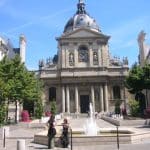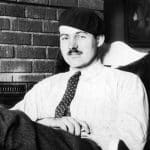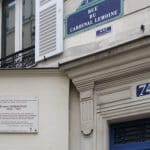|Hemingway in Paris|
Ernest Hemingway’s time in Paris during the 1920s was a formative period in his life and writing career. He lived there as part of the “Lost Generation,” a community of expatriate writers and artists disillusioned by World War I. Hemingway immersed himself in the city’s vibrant cultural and literary scene, frequenting cafés and salons with figures like Gertrude Stein, F. Scott Fitzgerald, and James Joyce. During this time, he honed his distinct writing style—concise and unadorned—while drawing inspiration from Paris’s atmosphere, its people, and his experiences. His memoir, A Moveable Feast, provides a vivid and affectionate account of this transformative chapter in his life.



Ernest Hemingway
Let’s talk about literature, with a great writer and journalist: Ernest Hemingway (July 21, 1899, Illinois – July 2, 1961, Idaho). Hemingway wrote most of his work between the 1920s and the 1950s. He won the Nobel Prize in Literature in 1954. His works are considered as classics of American literature. He moved to Paris with Hadley, his first wife, in 1921. He and his wife lived at 74 rue du Cardinal Lemoine in the Latin Quarter. In Paris, Hemingway met writers, painters, artists such as Gertrude Stein, James Joyce, Ezra Pound, Pablo Picasso, Joan Miró, Juan Gris, James Joyce. In March 1928, he left Paris with his second wife, moved back to the States and said “never again lived in a big city”.
Ernest Hemingway Book in Paris
Paris est une fête – a moveable feast : This novel is an ode to Hemingway’s time spent living in Paris. In his direct and to-the-point prose, he beautifully and simply describes Paris as he sees it. A Moveable Feast is an excellent guide to Hemingway’s favorite haunts in the Latin Quarter, Saint-Germain-des-Près, and Rue Mouffetard. A Moveable Feast is one of his Nobel-Prize winning. In the years after World War I, Paris had become a mecca for artists and intellectuals, many of whom who, like Hemingway, were expatriates. A great starting point, in Literature in particular with Hemingway, for Highschools Colleges Universities Trips to Paris.
The Latin Quarter and Hemingway in Paris
The Latin Quarter is an amazing place in Paris. La Cathédrale de Notre Dame de Paris, the Luxembourg Gardens, the Panthéon, the Sorbonne University, Cluny Museum, les Arènes de Lutèce and others important sights in Paris. The Arènes de Lutèce are among the most important remains from the Gallo-Roman era in Paris. This amphitheater could once seat 15,000 people, and was used to present gladiatorial combats.
In this district, France had its cultural roots revolution of May, 1968. It was punctuated by demonstrations and massive general strikes as well as the occupation of universities and factories across France. It brought the entire economy of France to a virtual halt when it reached its highest point.
Hemingway in Paris
During his time in Paris in the 1920s, Ernest Hemingway frequented various locations that were central to the city’s cultural and literary life. Some notable places include:
- Shakespeare and Company: A bookstore owned by Sylvia Beach, where Hemingway borrowed books.
- Cafés in Paris: Hemingway often wrote and socialized in cafés Les Deux Magots and Café de Flore.
- Gertrude Stein’s Salon: Located at 27 Rue de Fleurus, Stein’s home was a gathering place for artists,
- The Latin Quarter: Hemingway lived on Rue Cardinal Lemoine and Rue Descartes, spending much time.
- The Parisian Markets: He visited markets like Rue Mouffetard for inspiration and to observe daily life.
- Boulevard Saint-Michel: A lively area where Hemingway explored the bustling streets.
- The Luxembourg Gardens: A favorite spot for Hemingway to stroll, write, and reflect.
These locations were instrumental in shaping his literary voice and experiences, as vividly described in his memoir, A Moveable Feast.
Have a Latin Quarter private tour, and a Saint Germain private tour where you could see where Hemingway used to live, to talk in a café with his friends of the Lost Generation.
Emy,

